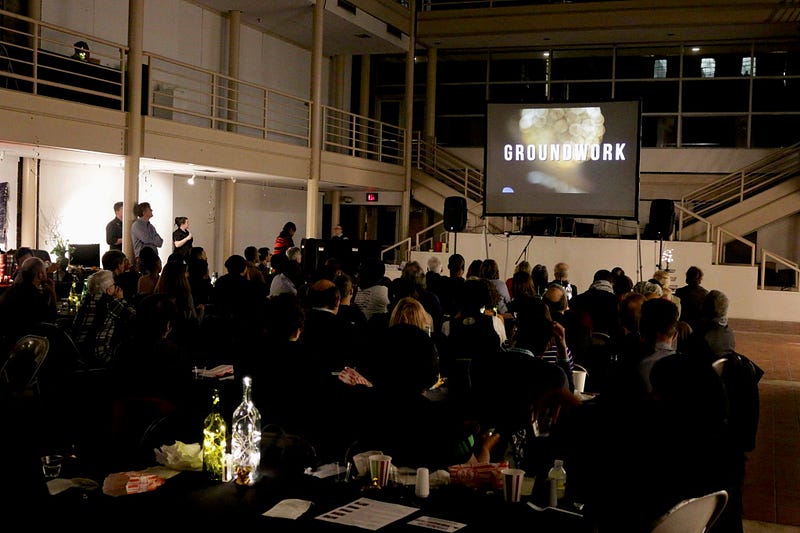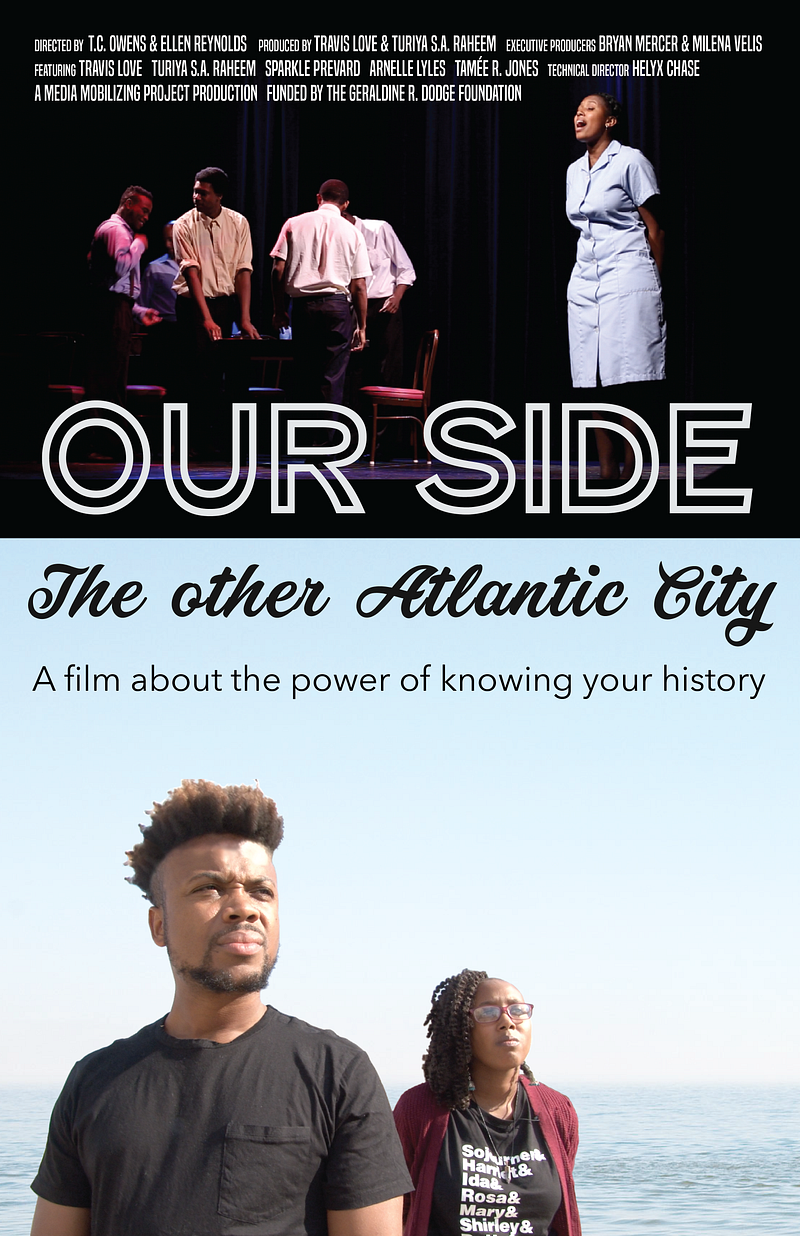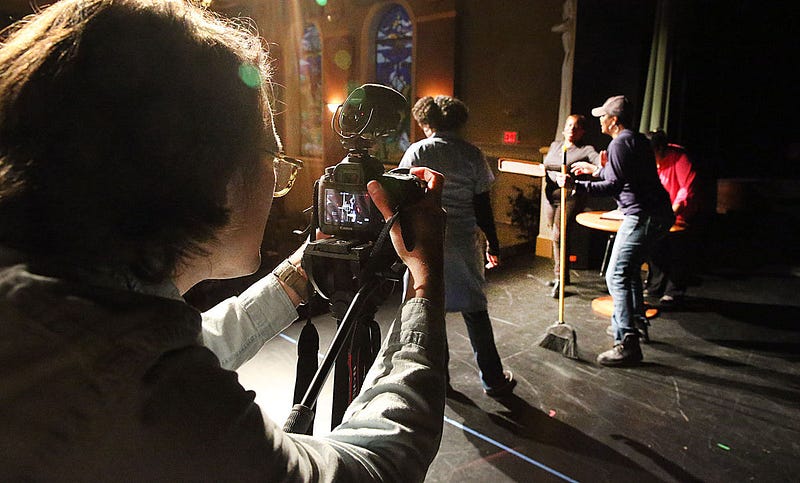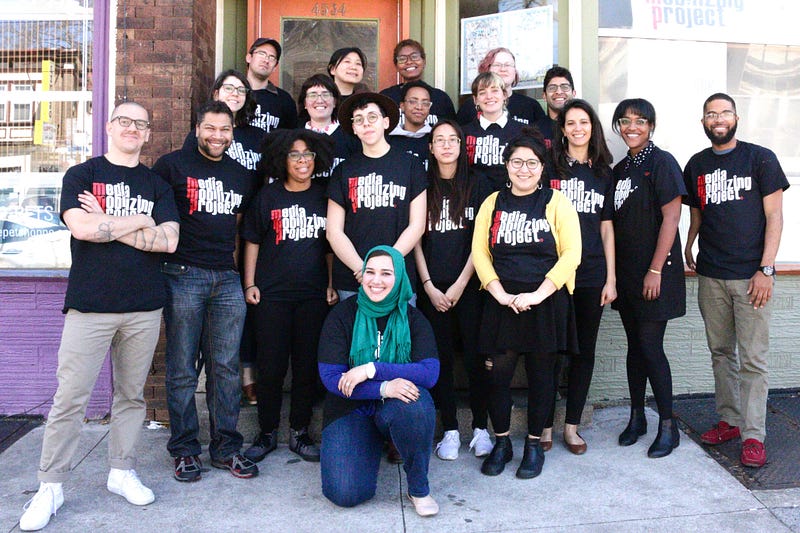An Immerse response: More adventures in making stories with and for the people
How do you take community engaged local production practices and build grassroots capacity to sustain that storytelling? This is a challenge that Media Mobilizing Project set out to face when we were founded as a community media hub in 2005.
Reading Sue Schardt’s “Adventures in Making Stories With and for the People” was a heartening look into how public media is tackling this challenge by transforming traditional journalism practices. I was excited to learn from examples produced for Finding America, including in my own town, through WHYY’s Every Zip Philadelphia.
My work at Media Mobilizing Project borrows from some of the same lessons, while making use of practices from community organizing, networked social movements, and social-impact documentary to put the internet and new media in the hands of working-class communities and social justice organizers. Drawing from those traditions, here are some additional takeaways for making stories with and for the people.
 2016
premier of Groundwork: Justice in the Birthplace of America at our annual Community Building
Dinner
2016
premier of Groundwork: Justice in the Birthplace of America at our annual Community Building
DinnerA lesson we share with the Finding America project is the practice of slowing down and taking time. In many ways not working in the format or structures of the breaking news cycle helps us push toward a deeper level of engagement. Many of our productions are short documentaries, introducing a social issue and the people engaged in tackling that issue through grassroots and community-based action.
We’re not producing for news first, but storytelling for local community impact. I couldn’t agree more with all there is to gain by disconnecting from the “breakneck speed of the internet,” and taking the time to get to know the people we’re telling stories for and with.
Our pieces at MMP are also mostly produced by small teams of volunteer and freelance contributors with a range of media and organizing skills. In this way, the production process also provides a learning process. Learning and exploring an issue is ripe with opportunities for relationship-building, and collaborating directly with the people and communities in our stories to better tell stories.
For this to work, we’ve needed to incorporate production processes that are iterative, open, and exploratory. Starting to produce stories in new communities outside of our hometown of Philadelphia has been the greatest opportunity to test and refine this approach.

Media Mobilizing Project is new to work in South Jersey, but because of the host of connections and networks that spread across the Delaware river from Philly, we’ve sought to tell stories that include this part of the region. Putting the subjects of the story in real leadership of the storytelling has been fundamental to us engaging this region that’s new to us. The result of this effort meant that when it came time to premiere our recent short documentary, Our Side: The Other Atlantic City at the Garden State Film Festival, the figures in the film introduced and presented it to their own community.
Their community and networks have served as the starting point for the story, serving as co-authors in its telling, and as connectors shaping some of the networks for the film’s distribution.
Our Side is a story about the power of knowing your history. The documentary is based on interviews with the actors, writers, and the director of a community-led theater adaptation of the book Growing up in the Other Atlantic City: Wash’s and the Northside by Atlantic City native Turiya S.A. Raheem. We found our way to the story through our earlier work with union organizers slammed by casino closings such the Trump Taj Mahal, resulting in the video “Building a Sandcastle: A Broken Promise to Atlantic City.”
While screening Building a Sandcastle and learning from residents how the city is portrayed, we became interested in how to tell the story of Atlantic City beyond the casino closings that define current news about the shoreside destination. In a media landscape that repeatedly paints Atlantic City residents as victims without much agency to affect the plans of state politicians and crony capitalists, we wanted to tell a story that acknowledges those oppressive systems, but still offers up a more resilient vision put forth by residents themselves—similar to media work of the Detroit Narrative Agency.
 T.C. Owens
filming at production of “Growing Up…” Credit: Ben Fogletto, Staff Photographer, Press of Atlantic
City
T.C. Owens
filming at production of “Growing Up…” Credit: Ben Fogletto, Staff Photographer, Press of Atlantic
CityWe met Turiya Raheem, and with her permission began sit-down conversations with cast members of the Spring 2016 production of her play. Turiya and the play’s director, Travis Love, became co-producers: identifying cast members to interview, setting up filming events in the community, and providing considerable feedback throughout the editing process.
Raheem and Love worked collaboratively with MMP filmmakers T.C. Owens and Ellen Reynolds, who filmed and edited the film. As white filmmakers not from Atlantic City trying to tell a story about the African American community that has been exploited time and again in the city’s history, T.C. and Ellen took a lot of time to build trust with Turiya, Travis, and the cast members. This collaboration intentionally brought protagonists in the story into the documentary’s production and editing process.
Now, turning to a period of community screenings and distribution, our goal is to screen Our Side as a piece of inspiration within their networks. Travis, Turiya and others in the film have trusted us with their contacts and connections — and most importantly, their story — to share the film. These relationships will be a starting point to building new networks and relationships for our next production, and hopefully shifting the prevailing narrative and power dynamics of the city.
There are challenges all along the way for media makers and community organizers tackling rights and justice issues through storytelling. Any community—but especially those who have dealt directly with inequality, racism, and injustice—are not going to easily trust outside storytellers. Histories of places are layered, and have many sides, so relationships to the community are necessary to ground and situate the history of the story.
It’s been important for us to develop a training space and collaborative production process that supports those engaged in production, emphasizing not just the shine of the finished product but more importantly the art of collaborating. Media Mobilizing Project has systematized this practice for the stories we tell through our Movement Media Fellows program.
 2017 Media
Mobilizing Project Movement Media Fellows
2017 Media
Mobilizing Project Movement Media FellowsNow in its third cohort, the Movement Media Fellows is an intensive and hands-on learning experience. A core principle of the Fellows program is working in teams. Also key are the collaboration skills the teams develop through working with organizations, grassroots groups and community leaders.
This production and training practice is summarized in an evolving curriculum tool we use called “Qualities of Movement Media Makers.” We borrow the “qualities of…” framework from other community organizers we’ve had the chance to collaborate with. The qualities sum up lessons hard won over the years from the successes and failures of our community produced media. For us, the process of making stories with and for the people is about cultivating and refining these qualities.
A Movement Media Maker is…
- Connected and committed to people’s struggles
- Politically grounded and informed
- Accountable to building power collectively
- Technically skilled
- Able to craft winning narratives
- Lifts up community arts and culture
- Emotionally intelligent
It’s this last quality — the emotional intelligence — that I would most urge every storyteller and media producer to embody. This means being okay with turning the camera off. The stories we tell thrive and grow through building relationships. Emotional intelligence takes that relationship-building process seriously. Without it our encounters and engagement with communities will be short-lived.
So yes, here’s to making time and being okay with where the story may lead you. Producing a documentary about the play Growing Up in the Other Atlantic City was not what we were expecting as we began research. But it allowed us to go beyond surface issues and more importantly build foundational new relationships.
We’re seeing these connections continue to come up, as now the community of Atlantic City reaches back to us to share stories of their struggles with police accountability and water access. Our Side was the start of a relationship, not the end.
Schardt leaves us with the insightful reflection that journalists, news stations and storytellers have an important project ahead of them to expand and diversify the public media audience. Documentarians, media artists, cultural workers, and organizers — at the grassroots — can make some critical contributions to that project, and deepen the local work of amplifying and connecting the local leaders who improve our local spaces. It’s a necessary step in addressing the protracted issues of our nation.
Bryan Mercer is Executive Director of Media Mobilizing Project. He works at the intersection of social movements, technology and media.
This piece includes contributions from T.C. Owens, Productions Coordinator at Media Mobilizing Project.
Immerse is an initiative of Tribeca Film Institute, MIT Open DocLab and The Fledgling Fund. Learn more about our vision for the project here.